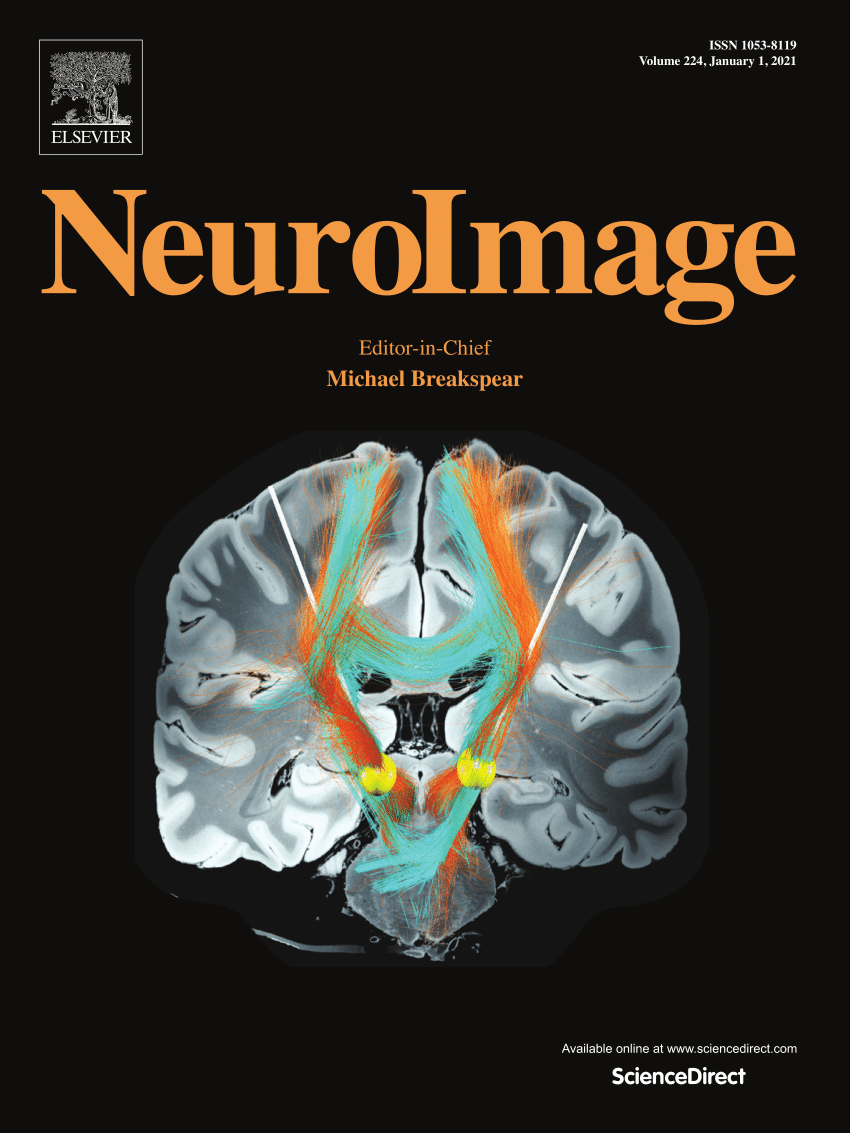Enhancing prediction of human traits and behaviors through ensemble learning of traditional and novel resting-state fMRI connectivity analyses
IF 4.7
2区 医学
Q1 NEUROIMAGING
引用次数: 0
Abstract
Recent advances in cognitive neuroscience have focused on using resting-state functional connectivity (RSFC) data from fMRI scans to more accurately predict human traits and behaviors. Traditional approaches generally analyze RSFC by correlating averaged time-series data across regions of interest (ROIs) or networks, which may overlook important spatial signal patterns. To address this limitation, we introduced a novel linear regression technique that estimates RSFC by predicting spatial brain activity patterns in a target ROI from those in a seed ROI. We applied both traditional and our novel RSFC estimation methods to a large-scale dataset from the Human Connectome Project and the Brain Genomics Superstruct Project, analyzing resting-state fMRI data to predict sex, age, personality traits, and psychological task performance. To enhance prediction accuracy, we developed an ensemble learner that combines these qualitatively different methods using a weighted average approach. Our findings revealed that hierarchical clustering of RSFC patterns using our novel method displays distinct whole-brain grouping patterns compared to the traditional approach. Importantly, the ensemble model, integrating these diverse weak learners, outperformed the traditional RSFC method in predicting human traits and behaviors. Notably, the predictions from the traditional and novel methods showed relatively low similarity, indicating that our novel approach captures unique and previously undetected information about human traits and behaviors through fine-grained local spatial patterns of neural activation. These results highlight the potential of combining traditional and innovative RSFC analysis techniques to enrich our understanding of the neural basis of human traits and behaviors.
通过对传统和新型静息状态 fMRI 连接性分析的集合学习,加强对人类特质和行为的预测。
认知神经科学的最新进展主要集中在利用来自 fMRI 扫描的静息态功能连接(RSFC)数据来更准确地预测人类的特征和行为。传统的方法一般是通过对感兴趣区(ROI)或网络的平均时间序列数据进行相关性分析,这可能会忽略重要的空间信号模式。为了解决这一局限性,我们引入了一种新型线性回归技术,通过预测种子区域中的空间活动模式来估算目标区域的 RSFC。我们将传统的和新型的 RSFC 估算方法应用于人类连接组计划和脑基因组超级结构计划的大规模数据集,通过分析静息态 fMRI 数据来预测性别、年龄、个性特征和心理任务表现。为了提高预测准确性,我们开发了一种集合学习器,利用加权平均方法将这些定性不同的方法结合起来。我们的研究结果表明,与传统方法相比,使用我们的新方法对 RSFC 模式进行分层聚类可显示出独特的全脑分组模式。重要的是,整合了这些不同弱学习者的集合模型在预测人类特征和行为方面优于传统的 RSFC 方法。值得注意的是,传统方法和新方法的预测结果显示出相对较低的相似性,这表明我们的新方法通过神经激活的细粒度局部空间模式捕捉到了有关人类特征和行为的独特的、以前未被发现的信息。这些结果凸显了将传统和创新的 RSFC 分析技术相结合来丰富我们对人类特征和行为的神经基础的理解的潜力。
本文章由计算机程序翻译,如有差异,请以英文原文为准。
求助全文
约1分钟内获得全文
求助全文
来源期刊

NeuroImage
医学-核医学
CiteScore
11.30
自引率
10.50%
发文量
809
审稿时长
63 days
期刊介绍:
NeuroImage, a Journal of Brain Function provides a vehicle for communicating important advances in acquiring, analyzing, and modelling neuroimaging data and in applying these techniques to the study of structure-function and brain-behavior relationships. Though the emphasis is on the macroscopic level of human brain organization, meso-and microscopic neuroimaging across all species will be considered if informative for understanding the aforementioned relationships.
 求助内容:
求助内容: 应助结果提醒方式:
应助结果提醒方式:


